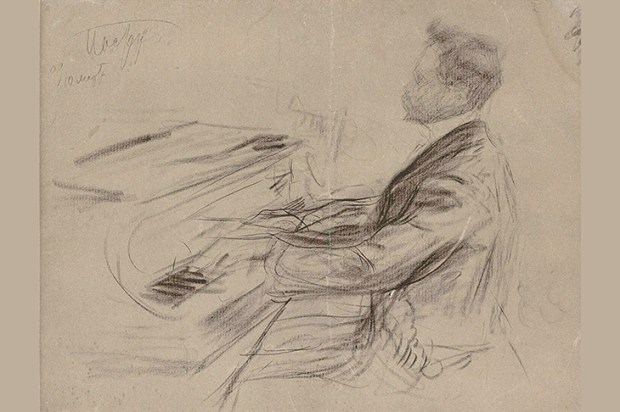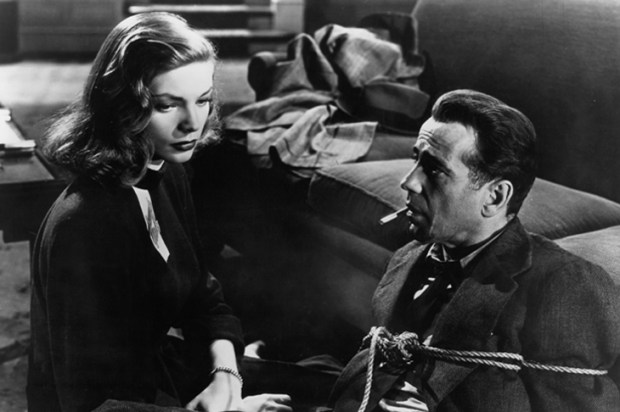Richard Rogers is to architecture what Jamie Oliver is to cookery. It is not enough for either of them just to be very good at what they do and to bank the proceeds: they want so much more. They want to use their skills and money to improve society more broadly. They are old-school campaigning idealists (and Oliver trained in the kitchen at the River Café, run by Rogers’s equally committed wife, Ruthie).
The downside of being a do-gooder in the UK, of course, is that people can find you irritating. Just because you and a mate (Renzo Piano) won the competition in 1971 for the Pompidou Centre in Paris and went on to become international architectural superstars doesn’t necessarily mean that everyone’s going to accept your prescriptions on how to live — which Rogers famously offered as Blair’s urban advisor, a working peer of the realm alongside the deputy PM John Prescott. He was mostly right — urban densification is indeed what’s needed, not sprawl — but there will always be those who resent what they might see as preaching.
A Place for All People seems aware of this — Rogers, with his co-writer and fellow urban theorist Richard Brown, sweetens the manifesto stuff with plenty of self-deprecating autobiographical details. The privileged Florentine childhood, the family move to England as war threatened, his near-suicidal misery when — as an extreme undiagnosed dyslexic — he was sent away to school. But he developed a survival strategy: to use his charm and cleverness to recruit support. ‘A gang of us began to coalesce around a small muddy pond in Epsom, where we would catch newts and tadpoles, or practise falling through trees, using the branches to moderate and slow our descent,’ he relates. Practise falling through trees? Without missing a beat, he relates how he met another boy there called Michael Branch who became a lifelong friend, ‘…and Pat Lillies, my first girlfriend — a beautiful tomboy three years older than me’. Rogers was a sexier Just William!
‘Now I had my own people close round me,’ he says, and indeed his Outlaws have carried him through life. Another girlfriend saved his bacon by helping him with his drawings at the Architectural Association school; his first professional partner was none other than Norman Foster; then it was Renzo Piano; later he had a variety of strong sidemen such as John Young, who attended to the tricky details that Rogers finds irksome. Although he got through the death of his beloved mother Dada in 1998 (‘Everybody was convinced that I was going to go to pieces when she died, because we were so close’) a still harder blow in 2011 was the sudden death from a seizure of his and Ruthie’s youngest son Bo. He was 28. As Rogers says, ‘There is no recovery from the death of a child.’ Once again, family and friends pulled him through.
All this will interest most people more than the urban manifesto sections, which are familiar from his co-authored earlier books. Now 84, he concludes by commending a new generation of architects and an ‘incredible diversity of approach’. Oddly he cites two who are dead (Jan Kaplicky and Zaha Hadid) plus one, Frank Gehry, who at 88 is no spring chicken.
Reiner de Graaf’s book Four Walls and a Roof is a more cerebral thing, a series of essays on what architecture is and does. Unlike Rogers he is of working-class background, a partner in OMA (Office for Metropolitan Architecture), a celebrated firm headed by the much more famous Rem Koolhaas. De Graaf is an excellent, witty and perceptive essayist. The heart of the book is a series of astonishing accounts of the protracted — and as it turns out, all doomed — sagas to get big urban projects approved and built in London (just pre-crash), Moscow (just pre-Putin), the Emirates (just pre-oil slump), and Kurdistan (just pre-Isis). The way de Graaf builds up to each (in hindsight) inevitable disappointment is masterly. ‘If there is a modern London, it is not the result of conviction but of slowly conceding ground,’ he despairs. ‘Every new modern building suggests the possibility that it could be the last.’
De Graaf is not terribly impressed by Rogers. A wicked vignette depicts him slurring platitudes at a big conference as disconnected slides flash up on a screen behind him. He muses:
They had interesting careers once, Rogers, Foster, and Renzo Piano — perhaps the last members of a generation of true modernists. But something odd happened to each of them… Rogers chose to dedicate himself to the city, which he viewed as the pursuit of a larger social good, but its complexities landed him out of his depth (and evidently still do).
Oof.
Rogers’s book is aimed more at the average reader while de Graaf’s is more intensely intellectual, demanding concentration. He lacks the vivid personal history, but has much more mental stimulation to offer. He emerges as an unlikely, deeply sceptical architectural Everyman. I like that.
Got something to add? Join the discussion and comment below.
Get 10 issues for just $10
Subscribe to The Spectator Australia today for the next 10 magazine issues, plus full online access, for just $10.
You might disagree with half of it, but you’ll enjoy reading all of it. Try your first month for free, then just $2 a week for the remainder of your first year.














Comments
Don't miss out
Join the conversation with other Spectator Australia readers. Subscribe to leave a comment.
SUBSCRIBEAlready a subscriber? Log in